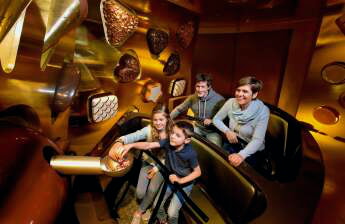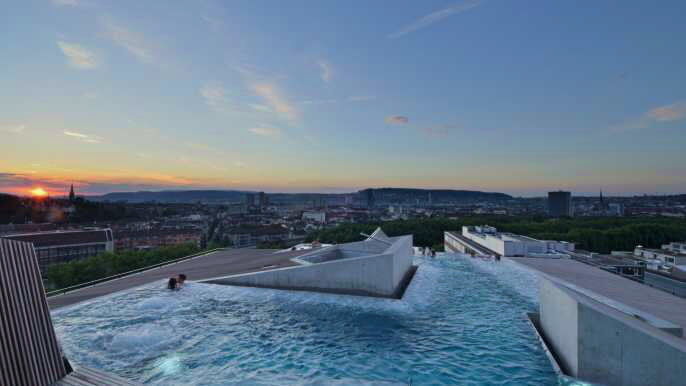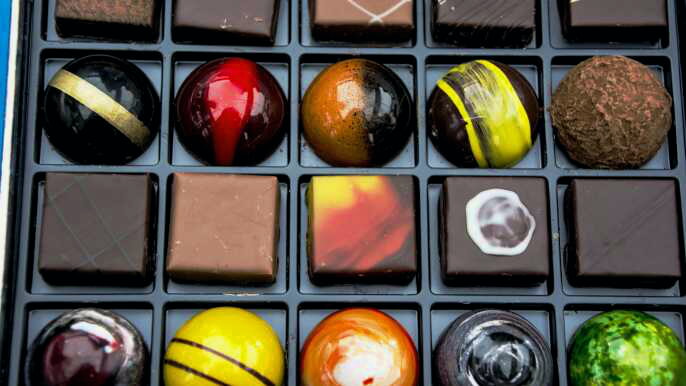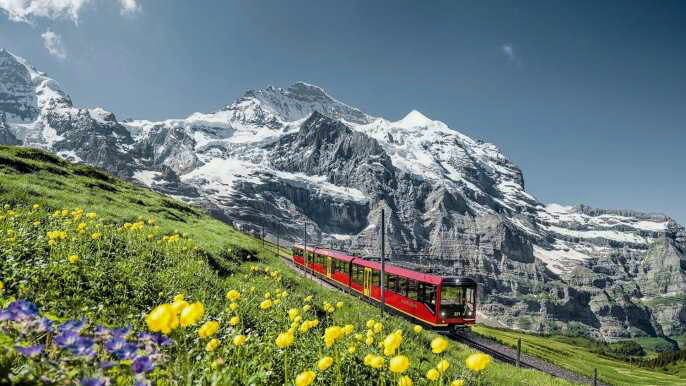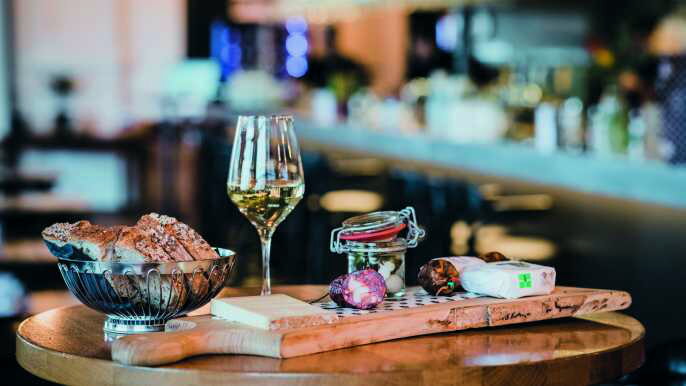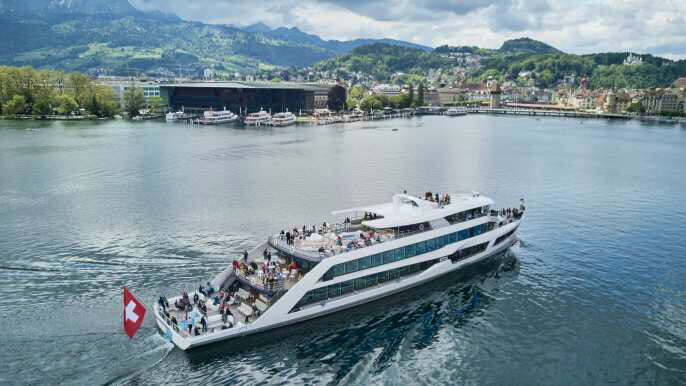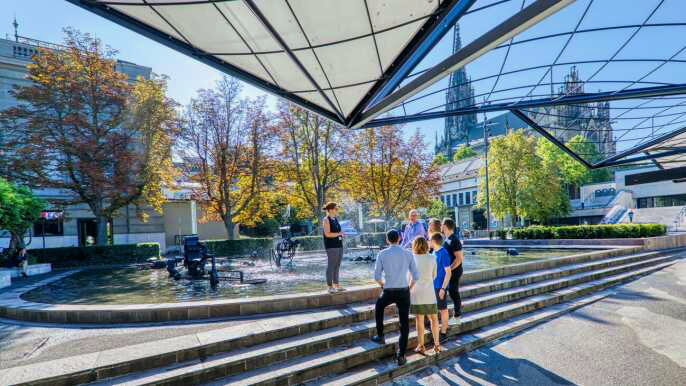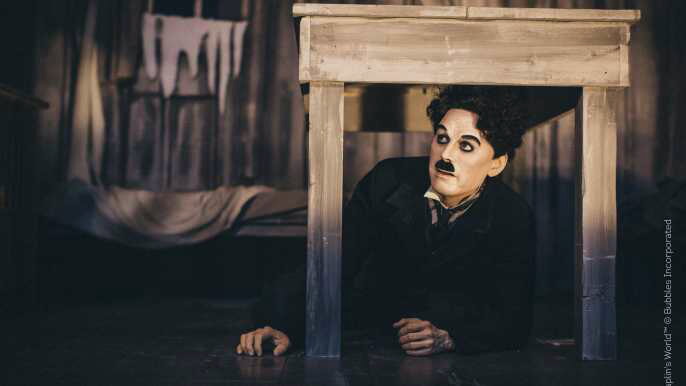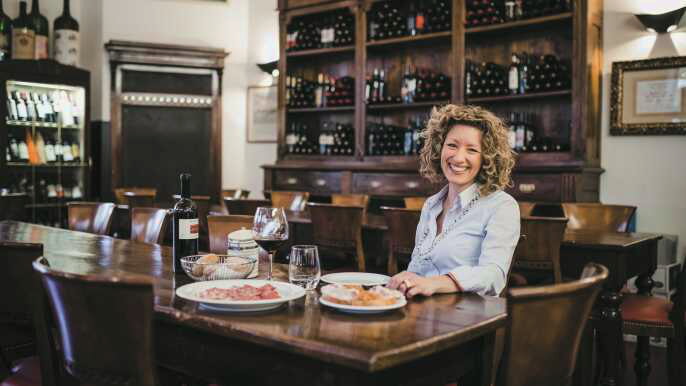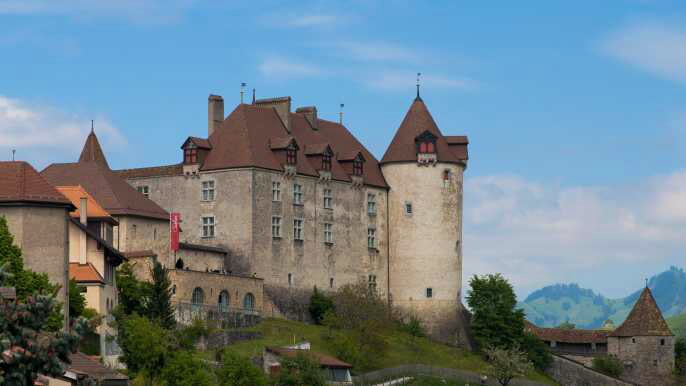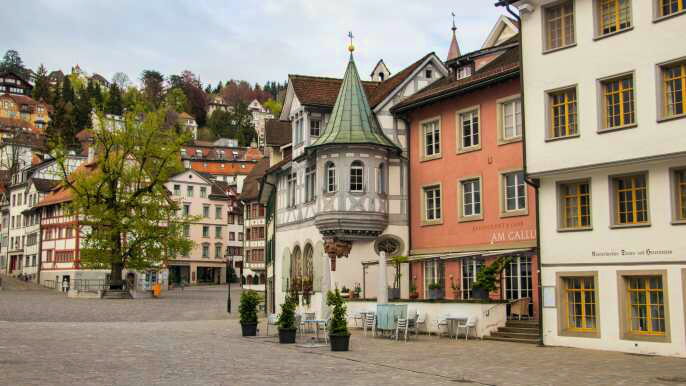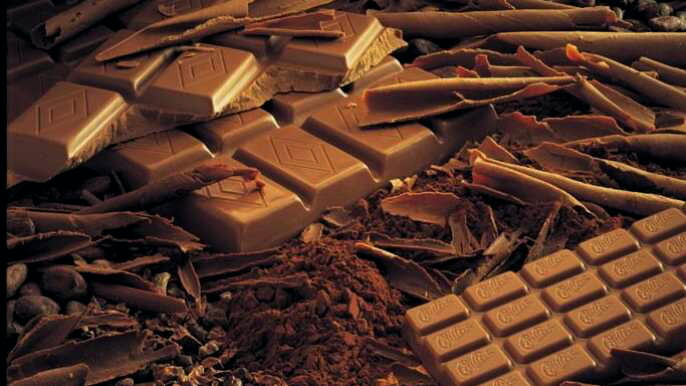Lucerne is a beautiful, compact city located in Switzerland. It is nestled among snowy mountains on Lake Lucerne, and is known for its preserved medieval architecture.
Lucerne is a beautiful city
Lucerne is a beautiful city that is perfect for anyone who loves to be outdoors. This Swiss city is situated on the shores of a beautiful lake, surrounded by snow-capped mountains. The city is a popular destination for tourists, as it offers a lot of activities and has plenty of great sights.
One of the most famous features of Lucerne is the covered bridge. This is a wooden footbridge that spans the Reuss River and is considered to be the oldest covered footbridge in Europe. It is decorated with paintings of Switzerland's history.
Another of Lucerne's landmarks is the Lion of Lucerne. This was constructed to commemorate the Swiss Guards killed during the French Revolution in 1792. It features a sculpture of a wounded lion. It is a moving piece of art.
Another of Lucerne's most iconic buildings is the Chapel Bridge. This is a wooden footbridge that is decorated with flowers. It is considered to be the longest covered wooden bridge in Europe.
A boat tour is a great way to see the city. Each tour is different, and can include sightseeing in the old town as well as a cruise on the lake. Each boat tour also has a three-course meal.
There are several other attractions worth checking out while in Lucerne. For example, there are several medieval features that date back to the 14th century. There are also a couple of parks, including the beautiful Inseli-Park. There are also some interesting museums and shopping.
Lucerne is a wonderful place to visit during any time of the year. The winter months are particularly picturesque, as it is surrounded by snow-capped mountains. It is a great location for skiing, too.
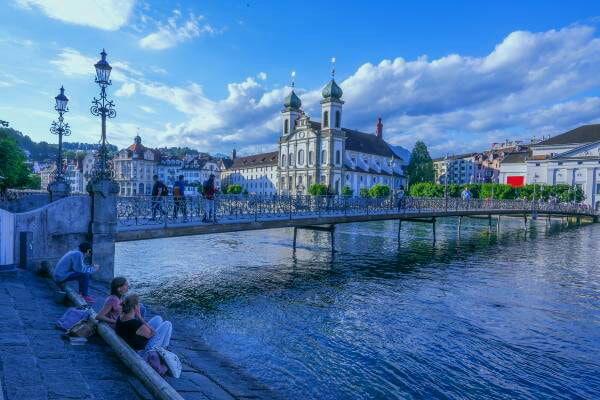
Lake Lucerne
Located in the heart of Switzerland, Lake Lucerne is a beautiful day trip destination. The area around the lake is filled with many tourist attractions. There are many biking trails and scenic walks that can be taken to enjoy the spectacular views of the lake.
There are also boat tours available. These tours are romantic and exciting. Guests can take a cruise on an art deco paddle steamer or a traditional wooden boat. A candlelit dinner can be added to the experience. These are a popular choice.
Lake Lucerne is made up of four basins and is connected by narrow channels. Each basin represents a glaciated valley. The lake is approximately 39 km long. It has a maximum width of 3 km. The depth of the lake is 214 meters. The water is crystal clear.
The Lake Lucerne Association is responsible for enhancing the aesthetics of the lake. The Association is also devoted to improving the quality of the water and enhancing the fishery. There are numerous bathing facilities along the shores of the lake. The Association also maintains several bicycle paths and skating paths that are perfect for cyclists.
The town of Lucerne is found at the north end of the lake. The town is compact and offers a number of shopping and sightseeing opportunities. The town is also home to the Swiss Museum of Transport and the Glacier Garden. The town's old-town square is a beautiful place to stroll and see many shops and restaurants. The town also hosts annual festivals, including a summer music festival.
There are several hiking trails in the surrounding area, which can lead visitors to the nearby Alps. The area has also been the site of two European Rowing Championships.
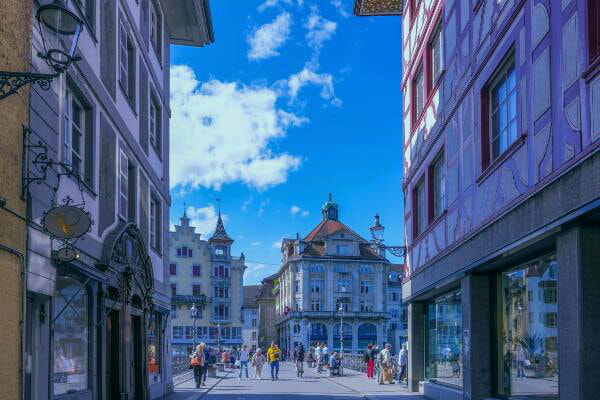
Kapellbrucke
Located in Lucerne, Switzerland, the Kapellbrucke is a large wooden bridge that is part of the city's fortifications. It was built in 1333 and is one of the most prominent structures in Lucerne. It is believed to be the oldest wooden bridge in Europe.
The bridge is a symbol of Lucerne. The 204 meter long bridge is made of wood and crosses the river Reuss in a diagonal fashion. The bridge is protected from Lake Lucern attacks.
The bridge is decorated with a series of paintings from the 17th century. They depict events in Lucerne's history. The paintings were painted by Hans Heinrich Wagmann. A few of the paintings are still intact. However, most of the paintings were destroyed during a fire in 1993.
The water tower at the top of the Kapellbrucke is 34 meters high. It has been used as a prison, a torture chamber, and a treasury. It also served as a watchtower.
The bridge is considered to be one of the most beautiful landmarks in the country. It is a major tourist destination.
The bridge and the octagonal brick tower, the Wasserturm, are considered to be the most photographed monuments in the entire country. It is also used as the guild hall of the artillery association. The stone Watertower was used in the past as a lighthouse.
The Kapellbrucke was originally built to protect Lucerne from attack. Its reconstruction was completed in 1994. It cost CHF 3.4 million. The reconstructed structure is impressive. The bridge has a red tiled roof. It is a beautiful and unique structure.
During the months of January and February, Lucerne has a carnival. During these months, the historic paintings are replaced with modern ones.
Spreuer Bridge
Lucerne is a town in Switzerland with a rich history dating back to the Roman Empire. It's on the western shore of Lake Lucerne. It's compact and easy to walk around. It's also a nice place to explore the rest of Switzerland.
Lucerne is home to a number of ancient buildings and bridges. One of the most impressive is the Lion Monument. The monument was created by Danish sculptor Bertel Thorvaldsen in 1820. It was carved into the face of a sandstone quarry.
The best time to visit Lucerne is in the fall, when the city's trees change color. The pond in front of the sculpture is a peaceful place to take a break.
Another famous landmark is the Chapel Bridge. This is the oldest truss bridge in the world. It links the Old Town of Lucerne to the right bank of the Reuss River.
The bridge is also home to several paintings. These paintings are under the bridge's roof and are believed to depict the "Dance of Death." They were painted by Kaspar Meglinger and his students from 1616 to 1637. Most of them have been restored. Some are still damaged by fire.
There's also the Kapellbrucke, a covered wooden footbridge. It's the most photographed building in Lucerne. It's the same shape as the preserved bridge next to it, but the roof is decorated with triangular paintings from the 17th century.
The Water Tower is also worth a visit. It's 34 meters high and was built in the 13th century as part of Lucerne's defenses. It's also used as a treasury and archive.
The Museum of Transport is another great attraction. It's located outside of the city center and requires several hours to see. The museum contains a chocolate adventure area, as well as exhibits about trains, space travel and motor vehicles.
Hofkirche
Lucerne's Hofkirche is located on a small hill overlooking the old city. The church is one of the best examples of Renaissance architecture in Switzerland. It was constructed between 1634 and 1645.
The ruins of the eighth-century Romanesque basilica that once stood here were the foundation for the present church. The building's twin towers survive today beside the Renaissance gable.
The church is surrounded by the tombs of Lucerne's oldest families. It is free to enter. The interior has a large 17th-century organ. The choir stalls were carved by Niklaus Geissler. The high altar is made of black marble, flanked by two patron saints. It is topped by a half-length figure of God.
The earliest traces of humans in the Lucerne area date back to the Middle Paleolithic. However, it was not until the Thirty Years War that any churches were built north of the Alps.
The oldest traces of human remains in the Lucerne area are stone artifacts. The first monastery of Lucerne was dedicated to St-Leodegar. The Benedictine monastery was converted into a collegiate church in 1455. It was then under the jurisdiction of the Murbach Abbey. The Abbey was sold to the Habsburgs in 1291. Afterwards, the town of Lucerne took over the priory. It was then turned into a "universal order" church.
The church is now home to the parish of St. Leodegar. The sanctuary has wooden pews on the south side. It is furnished with gilt statuary and altars.
The cathedral's canopy was constructed in Swiss Renaissance style. It has twin towers that are visible from many parts of the city. It was rebuilt in 1645 and is now considered to be the most important Renaissance structure in Switzerland.


